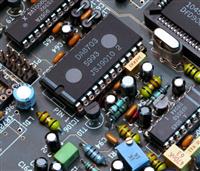
Capacitors (C)
A capacitor consists of two conductive plates separated by an insulating dielectric. It stores electrical charge when a voltage is applied between its two plates. Their capacitance is a measure of how much charge they can hold and is numerically equal to the ratio of the amount of charge on one conducting plate to the voltage between the two plates. Represented by the letter C in a circuit, its basic unit of capacitance is the farad (F).
Capacitors include polar and Non-polarized types. Non-polarized capacitors can be used in both AC and DC circuits as they do not have positive or negative polarities. While Polar capacitors have an inherent polarity so they can only be used in one direction in a circuit.
How to distinguish between polar and Non-polarized capacitors?
Generally, there is a mark regarding AC or DC on the capacitors. Those with positive and negative polarities markings can only be used in DC circuits, while others are non-polarized and can be used in both AC and DC. When selecting the right capacitor, in addition to identifying the application of DC and AC, it is also necessary to consider its voltage resistance, dielectric loss, frequency of use, and other circuit design requirements.


